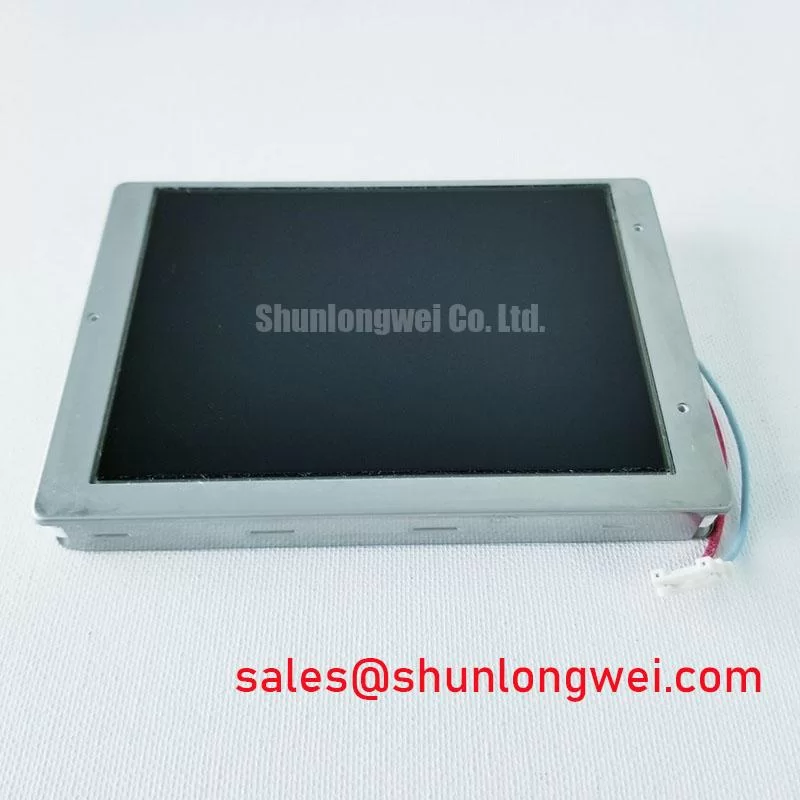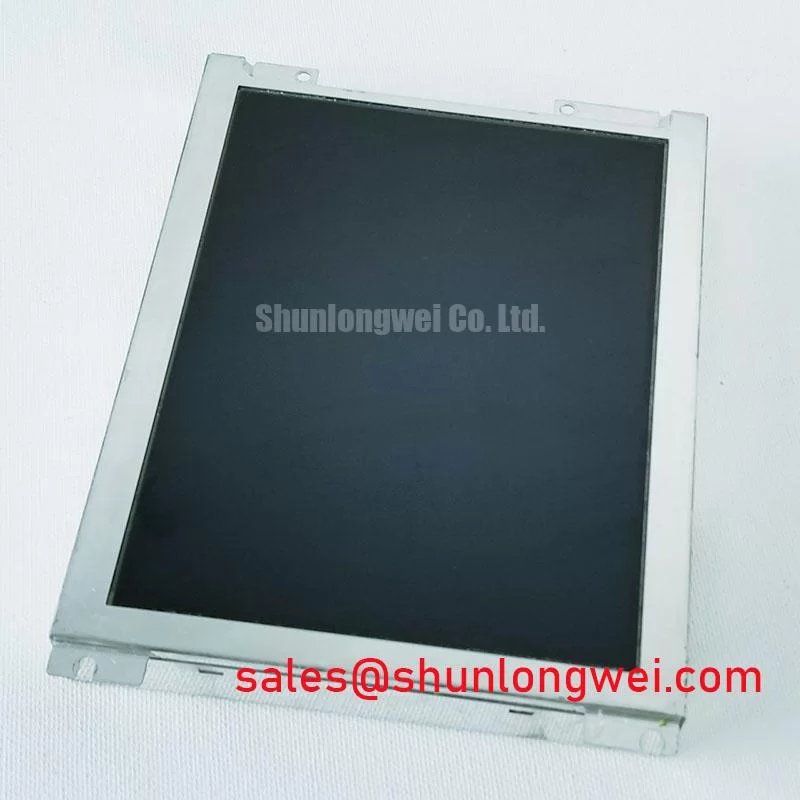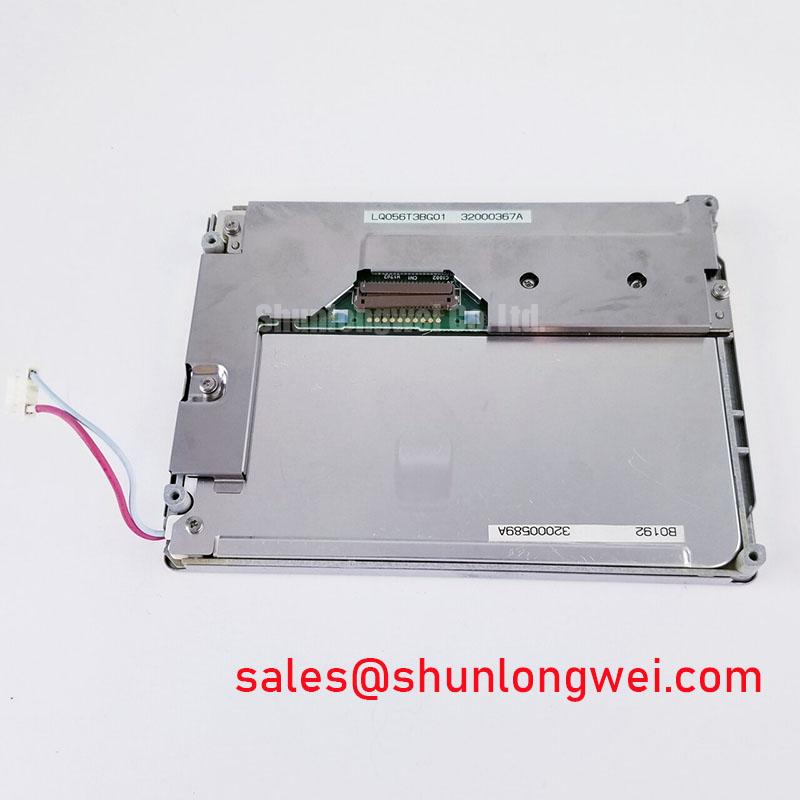Content last revised on November 19, 2025
LQ084V1DG21E Product Analysis: An 8.4-Inch VGA Display for Industrial HMIs
Engineering an HMI with Proven Technology and Stable Performance
The Sharp LQ084V1DG21E is an 8.4-inch a-Si TFT-LCD module engineered for longevity and consistent visual performance in demanding industrial environments. Delivering a resolution of 640x480 (VGA) and a brightness of 300 cd/m², this display prioritizes operational reliability over cutting-edge specifications. Key engineering benefits include a long-life CCFL backlight and a standard Parallel RGB interface for straightforward system integration. For designers evaluating display options for legacy system upgrades or new projects requiring robust, no-frills visualization, the LQ084V1DG21E offers a well-documented and stable platform. For applications where a higher pixel density is not a primary design constraint, this display's proven architecture ensures predictable performance and integration simplicity.
Application Scenarios & Value
System-Level Benefits in Industrial Control and Monitoring
The LQ084V1DG21E is best suited for applications where clear, reliable data visualization is critical and the interface does not require high-definition video. Its 8.4-inch diagonal size and VGA (640x480) resolution provide an optimal balance for displaying essential operational parameters, status indicators, and simple graphical user interfaces in equipment such as industrial control panels, medical monitoring devices, and test and measurement instruments.
Consider the challenge of upgrading a legacy CNC machine controller. The primary requirement is not cinematic quality but rather a display that can be seamlessly integrated with existing embedded systems and withstand the rigors of a factory floor environment. The LQ084V1DG21E's standard 31-pin Parallel RGB interface simplifies the electronic design, avoiding the need for complex signal converters often required for newer LVDS or eDP panels. Its specified operating temperature range of 0 to 55°C, while not extreme, is adequate for most indoor industrial settings, ensuring stable operation without specialized thermal management. The CCFL backlight, rated for over 50,000 hours, provides a long operational life, reducing maintenance cycles and total cost of ownership—a critical consideration for capital equipment. While this model serves VGA applications well, for systems requiring similar robustness in a more compact form factor, the related LQ064V3DG06 offers a 6.4-inch alternative.
Key Parameter Overview
Highlighting Critical Specifications for System Integration
The technical specifications of the LQ084V1DG21E are tailored for embedded and industrial applications demanding proven technology. The following parameters are crucial for design-in evaluation.
| Parameter | Specification | Engineering Significance |
| Screen Size | 8.4 inch | Provides a substantial viewing area for data-centric HMIs without a large physical footprint. |
| Resolution | 640(RGB) x 480 (VGA) | Standard resolution ensures compatibility with a wide range of embedded controllers and reduces system processing overhead. |
| Brightness | 300 cd/m² (Typ.) | Offers sufficient luminance for typical indoor industrial and medical environments. |
| Backlight System | 1 pcs CCFL, >50k hours lifetime | This long-life backlight is a key reliability feature, minimizing the need for replacements over the equipment's lifespan. Think of it as industrial-grade durability versus consumer-grade disposability. |
| Signal Interface | Parallel RGB (1 ch, 6-bit), 31 pins | Enables direct connection to many microcontrollers and legacy systems, simplifying hardware design and potentially reducing BOM cost. |
| Operating Temperature | 0 ~ 55 °C | Suitable for controlled environments found in factories, laboratories, and medical facilities. |
Technical Deep Dive
Implications of the CCFL Backlight and Parallel Interface
While modern displays have largely transitioned to LED backlights and serial interfaces like LVDS, the LQ084V1DG21E's use of a Cold Cathode Fluorescent Lamp (CCFL) and a Parallel RGB interface holds specific engineering value. The CCFL backlight, while requiring an inverter, is a mature technology known for its stable color rendering and long operational lifespan, often exceeding 50,000 hours. For designers, this translates to predictable, long-term reliability. The CCFL's "warm-up" time and performance characteristics are well-documented, removing the variables that can sometimes accompany newer technologies. This is analogous to choosing a well-established industrial motor; its performance curves are known, and its failure modes are understood, enabling robust system design.
The Parallel RGB interface is another key feature for system simplification, particularly in cost-sensitive or legacy-compatible designs. It transmits color data for each pixel directly over parallel lines, eliminating the need for serialization/deserialization (SerDes) hardware. This direct approach reduces latency and simplifies the driver board design, making it an excellent choice for systems where a microprocessor has an integrated parallel display controller. This straightforward integration path is a significant advantage in maintaining or upgrading existing product lines without a complete system redesign. For more on the fundamentals of TFT technology, explore The Ultimate Guide to TFT LCD.
Frequently Asked Questions (FAQ)
What is the primary benefit of the LQ084V1DG21E's CCFL backlight?
Its primary benefit is a proven operational lifetime of over 50,000 hours, which ensures long-term reliability and reduces maintenance requirements for industrial equipment designed for extended service life.
Is the 640x480 VGA resolution sufficient for modern industrial HMIs?
For many industrial control and monitoring applications focused on displaying process data, status indicators, and simple schematics, VGA resolution provides ample clarity. It avoids the higher processing and power demands of HD displays, making it a practical and efficient choice for data-centric interfaces.
How does the Parallel RGB interface impact system design?
It simplifies the electrical interface between the display and the host controller. By transmitting pixel data directly, it eliminates the need for LVDS transmitters/receivers, which can reduce PCB complexity, shorten design time, and lower the bill of materials (BOM) cost, especially for systems with native parallel output support.
What are the ideal operating environments for this display module?
With an operating temperature range of 0 to 55°C, the LQ084V1DG21E is engineered for indoor, controlled environments such as factory floors, medical labs, and control rooms. It is not intended for outdoor use or in applications exposed to extreme temperatures or direct sunlight.
Strategic Considerations for Long-Lifecycle Equipment
Integrating the Sharp LQ084V1DG21E is a strategic decision rooted in prioritizing stability and longevity over chasing the latest display trends. For OEMs manufacturing equipment with a planned service life of a decade or more, sourcing components with a proven track record is paramount. This module represents a commitment to a stable, well-understood technology platform, simplifying long-term service, repair, and part replacement strategies. By designing with components like the LQ084V1DG21E, engineers can build systems that are not only functional but also sustainable and supportable throughout their entire lifecycle, aligning with the quality-first principles of manufacturers like Sharp.








